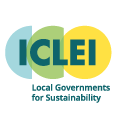On the move for more inclusive and equitable communities
Mobility is much more than translating from point A to point B. Transport systems and walkability define the relationship between people and the urban space. Mobility systems contribute to good or bad outcomes in health, safety, and inclusion/exclusion. An unequal and non-accessible mobility system may lead to marginalized communities and exacerbate vulnerabilities. A lot of efforts are now being made towards sustainable mobility to reduce emissions and climate change impact. We must ensure, while transitioning to greener and cleaner cities, that our transport and mobility systems are taking care of people’s needs and all residents can benefit from them in equal terms.
The pioneers of the Malmö Commitment had their first internal exchange around the challenge of equitable and sustainable transport, where they discussed and showed different approaches to build a more inclusive, equitable and sustainable mobility in their cities and regions. Recognizing at the same time the challenges they still have ahead and the need to monitor and measure through social equity indicators the impact of all these policies they’re now implementing.
State of Yucatan, Mexico
Most yucatecos and yucatecas move around using public buses and vans, although in 2018 the state’s transport system suffered from safety and accessibility issues. The units were too old, not environmentally friendly, and to access them you needed to climb some steps. As a response of the COVID-19 the State of Yucatan developed the Agenda 2040, through participatory approaches with 135 thousand participants in 39 dialogues, five expert forums and more than a hundred municipal consultations. Transport was one of the hot topics in the process. The new system Va y Ven, has reduced emissions to a half and nitrogen oxides in 80%, prioritizing universal accessibility and intermodality. In addition, the IE-Tram is planned for 2023; this will be the first of its kind in Latin America, 100% electric and connecting colonias (neighborhoods) like never before.
In our mobility planning we prioritize universal accessibility and intermodality
The new buses and vans of the Va y Ven system are accessible for people with mobility and visual impairments. The drivers have received training in the workshops “in the user’s skin” so they can attend to passenger needs. The new units are equipped to carry bikes, connecting the system with this type of mobility. According to the INEGI 2020 Yucatan was the state with the higher number of bike owners, but the infrastructure was totally deficient; something that the project Va y ven has been focusing on as a priority together with improving walkability. Through the participatory processes, new routes and night schedules were defined to connect people living farther away from the neuralgic center of Mérida and working night turns, making commuting safer and more affordable. For this radical transformation of their mobility system the State of Yucatan has used technology in their favor, introducing electronic payment and tracking routes in real time to monitor potential improvements in the service. Together with ICLEI, as part of their commitment to the Malmö Commitment, they will work to include social aspects in those indicators to see the real impact on the different populations.
City of Austin, United States
A culturally car centric city, in a culturally car centric country, the City of Austin is making efforts towards a more sustainable mobility prioritizing equity and well-being guided by their participatory Climate Equity Plan. The city has taken an innovative integrating approach addressing the challenges of transportation and housing affordability together. It is well known the way you commute and where you live is a big driver of your GHG emissions. Austin has become one of the most expensive places to live in the United States so people are increasingly living further and further away from the population centers, having no other choice than commuting everyday.
Transportation and land use strategies must be combined to create powerful and lasting sustainability impacts
Instead of working in silos, the different city departments are joining forces. In the city’s view transportation and land use strategies must be combined to create powerful and lasting sustainability impacts while also creating a healthier, safer, more affordable, and more equitable city. Through their Strategic Housing Blueprint the city is creating affordable housing units for those making less than 80% of the median family income and the Rental Housing Development Assistance program is establishing permanent supportive rental housing, supporting both housing ownership and renters. At the same time the city is working to improve walkability, bike lanes and other micro-mobility services. Austin’s Project Connect, a large-scale local and regional transit solutions project, which aims to provide more access to healthcare, education, employment, and essential services, allocates funds for anti-displacement policies. Improving city conditions, making the city more livable and desirable can increase cost burdens pushing vulnerable populations away, the City of Austin is monitoring displacement risks through a number of socio-economic indicators and funds for anti-displacement policies are allocated accordingly. With this holistic approach the city is addressing two of their main sustainability challenges at once. The City of Austin will continue working with ICLEI and the pioneers of the Malmö Commitment to continue advancing and accelerate this work.
We’re looking forward to many more exchanges among our cities and regions!
Click here to learn more about the work of all pioneers on this and other challenges.

